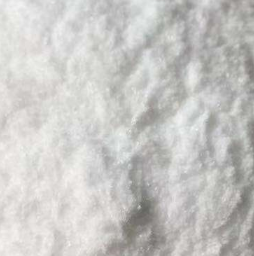| "Descrizione" by Frank123 (12058 pt) | 2023-Jul-19 17:06 |
Review Consensus: 8 Rating: 8 Number of users: 1
| Evaluation | N. Experts | Evaluation | N. Experts |
|---|---|---|---|
| 1 | 6 | ||
| 2 | 7 | ||
| 3 | 8 | ||
| 4 | 9 | ||
| 5 | 10 |
Tropolone is a natural component, an aroma discovered in 1942 by Harold Raistrick and collaborators working in London on a fungus, Talaromyces stipitatus (Penicillium stipitatum). The name Tropolone was first given by Dewar MJ (1).
The name describes the structure of the molecule:
- Tropolone - This molecule is an oxidation derivative of tropolone, an aromatic organic compound. It has a ring structure with one oxygen atom and a double bond.
The synthesis of tropolone has been the subject of scientific research for many years. One of the first synthesis methods, reported by R. B. Woodward and co-workers in 1945, involves the oxidation of hinokitiol. Hinokitiol is a tropolone derivative found in the wood of cypresses (Cupressus L. 1753), which belong to the Cupressaceae family.
Another method for the synthesis of tropolone involves the cyclization of 2-hydroxy-hepta-2,4-dienoic acid. This method was reported by M. Julia and S. Julia in 1973. The process involves heating 2-hydroxy-hepta-2,4-dienoic acid in the presence of a base to induce cyclization, followed by acidification to produce tropolone.
In terms of extraction, tropolone and its derivatives are typically isolated from natural sources using solvent extraction methods. For example, hinokitiol can be extracted from the wood of trees in the cypress family using solvents such as ethanol or methanol. The extracted hinokitiol can then be oxidised to produce tropolone.
Description of the raw materials used in its production:
- Phenol - Phenol is a raw material used in the production of tropolone. It can be obtained from natural sources such as coal or synthesized from benzene through a specific chemical process.
- Acetic acid - Acetic acid is another reagent used in the synthesis of tropolone. It can be obtained from natural sources such as sodium acetate or synthesized from other compounds through specific chemical reactions.
Industrial chemical synthesis step-by-step:
- Friedel-Crafts reaction - Acetic acid reacts with phenol through a Friedel-Crafts reaction to form an intermediate compound.
- Cyclization - The intermediate compound undergoes cyclization to form tropolone, through dehydration and condensation reactions.
- Purification - The synthesized tropolone is purified to remove any impurities or by-products, using methods such as crystallization or distillation.
- Characterization - The purified tropolone is characterized using various analytical techniques to confirm its identity, purity, and desired properties.
It appears as a white crystalline powder.

What it is used for and where
Tropolone is used in various sectors, such as cosmetics, pharmaceuticals, and industrial chemistry, for its antimicrobial and antioxidant properties. It is also used as a precursor for the synthesis of other chemical compounds.
Cosmetics
Skin conditioning agent. It is the mainstay of topical skin treatment as it has the function of restoring, increasing or improving skin tolerance to external factors, including melanocyte tolerance. The most important function of the conditioning agent is to prevent skin dehydration, but the subject is rather complex and involves emollients and humectants that can be added in the formulation.
Other uses
- Biological activity. Tropolone and its derivatives exhibit a number of biological activities. For example, they have been studied for their antimicrobial, antiviral and antitumour properties.
- Chemical synthesis. Tropolone can be used as a starting material in the synthesis of more complex organic compounds. Its aromatic ring can undergo reactions that allow the introduction of new functional groups.
- Natural products. Tropolone is a component of some natural products. For example, it is part of the structure of the antibiotic tropolomycin.
- Chemical research.Tropolone is often used as a ligand in inorganic chemistry. A ligand is a molecule that binds to a central metal atom to form a coordination complex. The oxygen atom and aromatic ring of Tropolone can interact with metal atoms, making it useful in this context.
- Chelating agent. Tropolone has the ability to form complexes with metal ions, which means it can act as a chelating agent. Chelating agents are substances whose molecules can form different bonds with a single metal ion and are often used in the treatment of metal poisoning.
- pH. Tropolone can also be used as a pH indicator in certain situations due to its ability to change colour depending on the acidity or basicity of a solution.
The most relevant studies on this chemical compound have been selected with a summary of their contents:

- Molecular Formula: C7H6O2
- Molecular Weight: 122.123 g/mol
- CAS: 533-75-5
- EC Number: 208-577-2
- UNII: 7L6DL16P1T
- PubChem Substance ID 24900578
- MDL number MFCD00004158
- Beilstein Registry Number 1904978
- 2-Hydroxycyclohepta-2,4,6-trienone
- Tropomyosins
- Purpurocatechol
- NSC 89303
- 2-Hydroxy-2,4,6-cycloheptatrien-1-one
- BRN 1904978
- 2,4,6-Cycloheptatrien-1-one, 2-hydroxy-
- CHEMBL121188
- 2-hydroxycyclohepta-2,4,6-trien-1-one
- CHEBI:79966
- 2-Hydroxytropone
- NCIMech_000829
- 2-Hydroxy-2,4,6-cycloheptatrienone
References_______________________________________
(1) Dewar MJS. Tropolone. Nature. 1950;166:790–791
| Evaluate |

